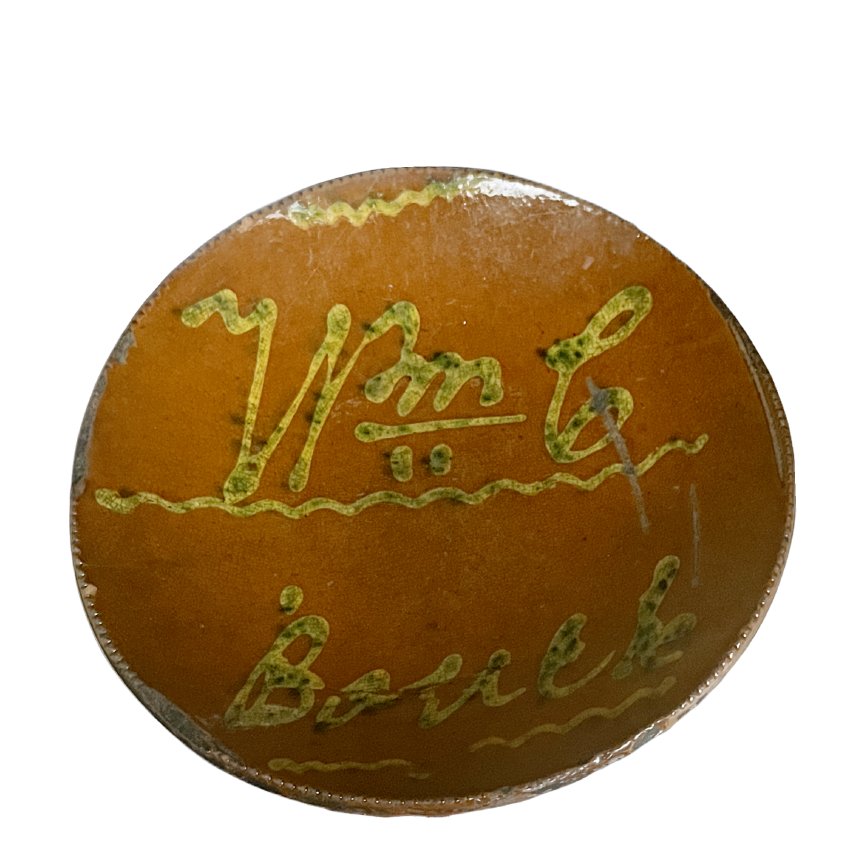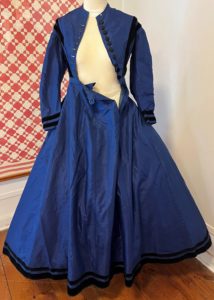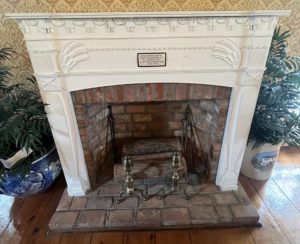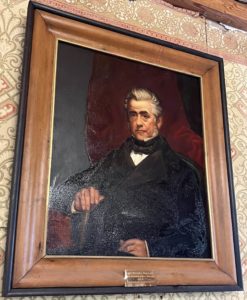Who was William C. Bouck?
William C. Bouck was born on January 7, 1786 to Christian Bouck and Margaret Borst on Bouck’s Island in Fultonham. Both of his parents had Palatine ancestry. Throughout his life, he was a farmer, town clerk, town supervisor, sheriff, assemblyman, state senator, militia colonel, canal commissioner, governor, delegate to the 1846 state constitutional convention, and assistant U.S. Treasurer.
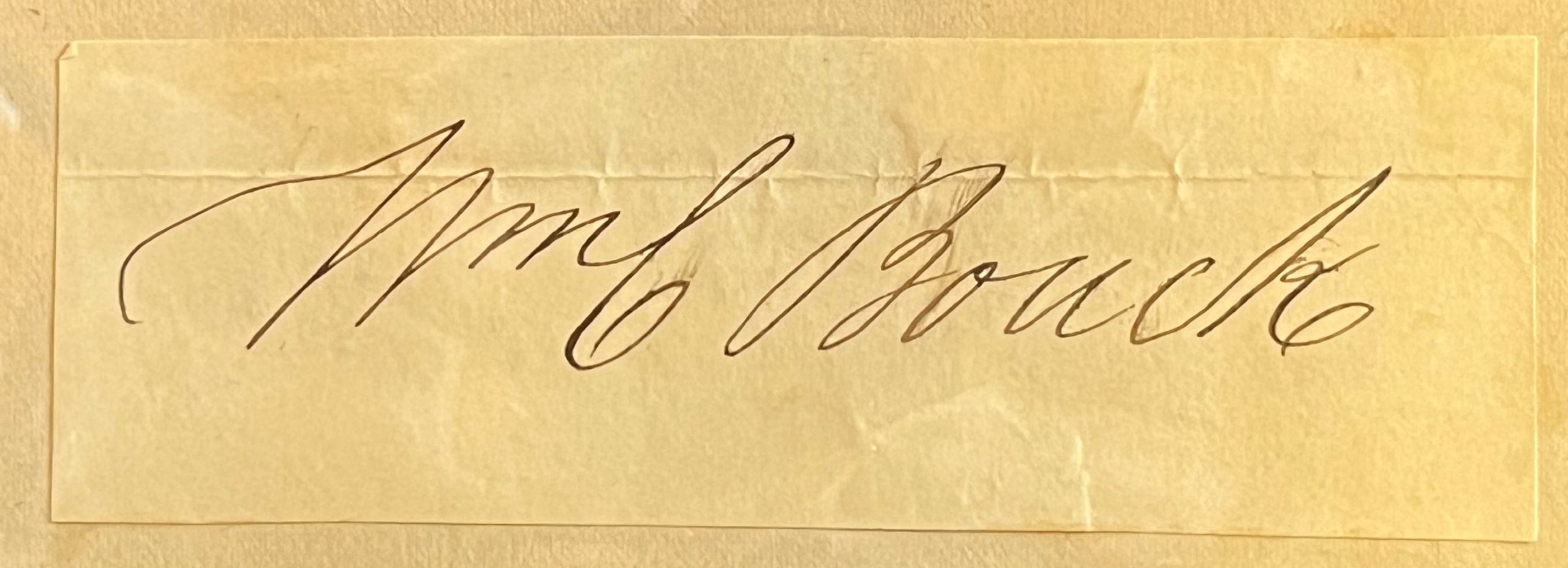
Wm C. Bouck Signature
c. 1800s Loaned by Michael West L2023.1.1
Family Life
Bouck’s early life was spent on his family’s farm on Bouck’s Island. He farmed there until he was in his early twenties and received a limited education in the county. His brother, Joseph Bouck, served as a member of the House of Representatives between 1831 and 1833.
In 1807, Bouck married Catherine Lawyer. Between 1808 And 1829, the two had 11 children: James Madison (1808-1865), Joseph William (1809-1886), Margaret (1811-1837), Anna Eve (1813-1890), Christina (1818-1836), Christian (1818-1909), Catherine (1820-1899), Caroline (1822-1913), Elizabeth (1825-1826), Gabriel (1828-1904), and Charles (1829-1910).
Gabriel ended up becoming the 6th Attorney General of Wisconsin, a member of the Wisconsin State Assembly, the 24th Speaker of the Wisconsin Assembly, and a member of the House of Representatives for the state of Wisconsin.
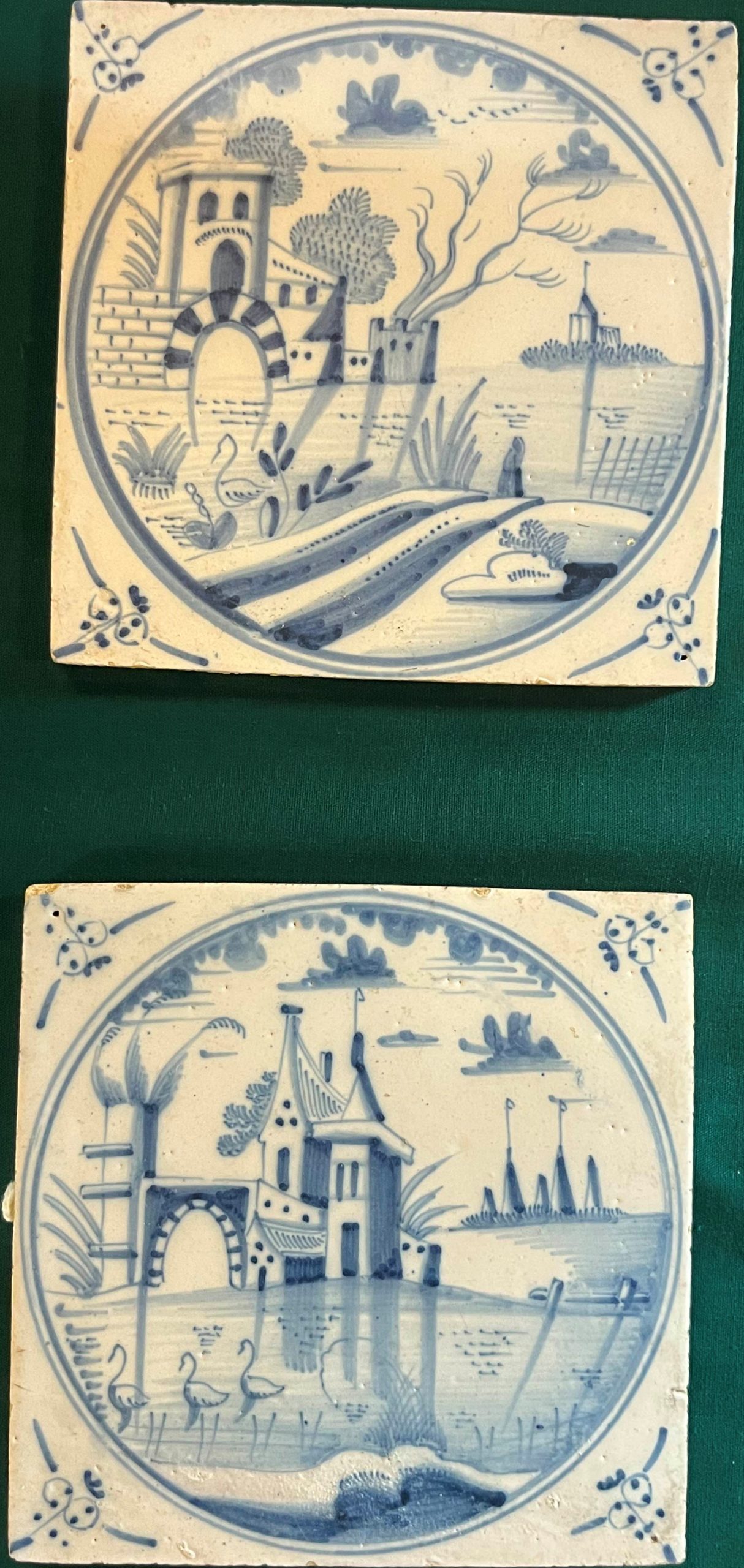
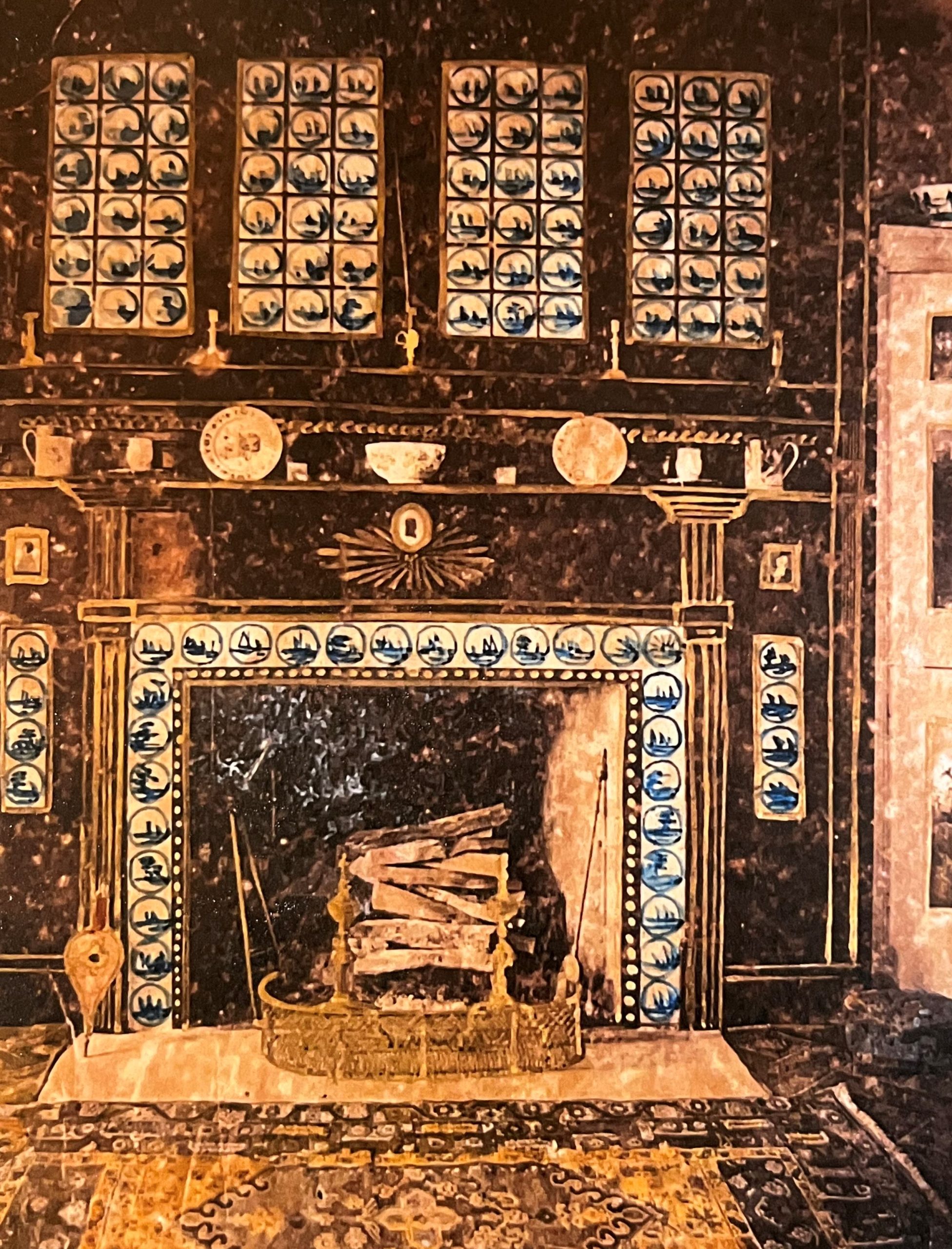
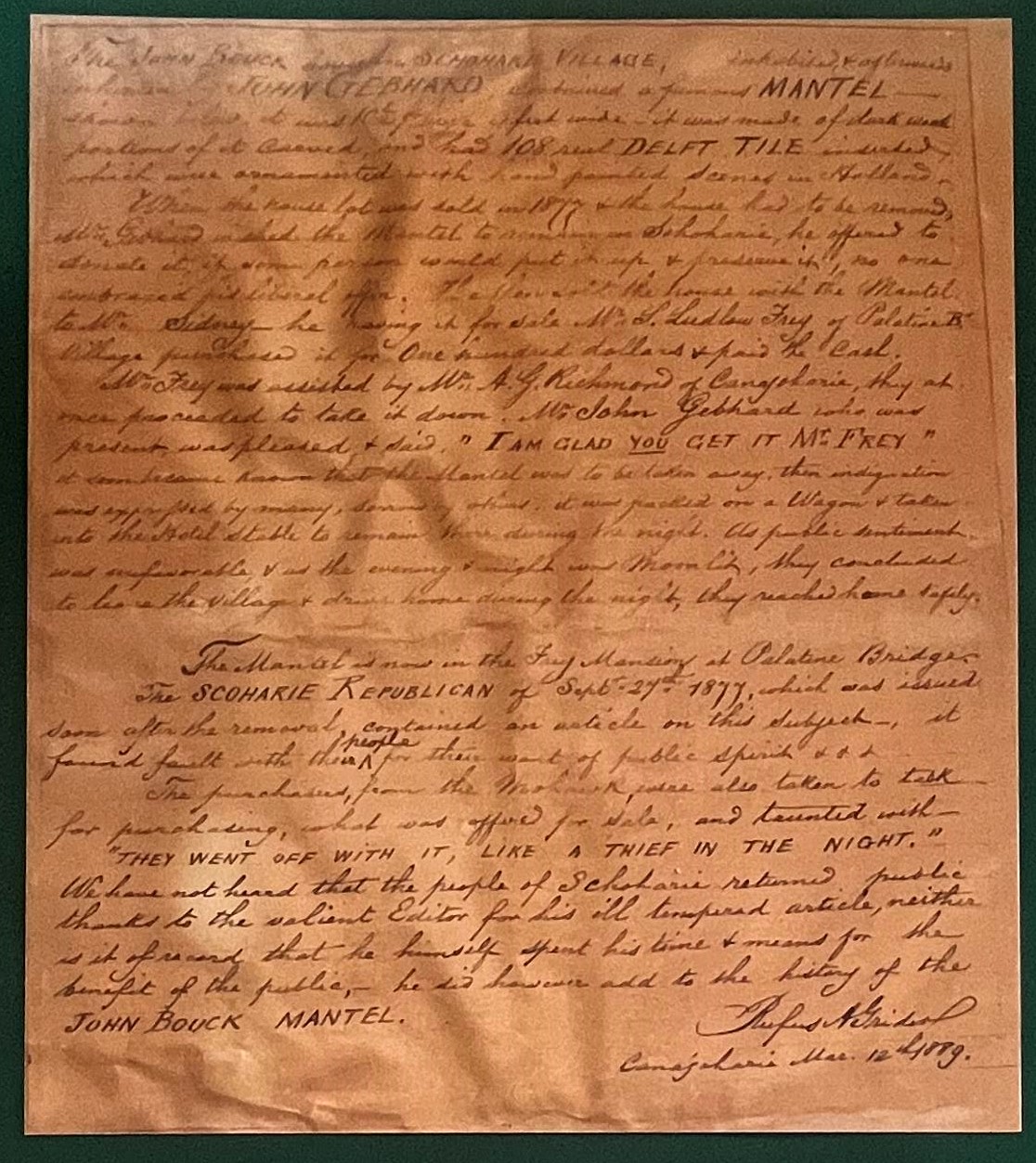
Transcript of Grider’s Account of the Bouck Mantel:
The JOHN BOUCK house in SCHOHARIE VILLAGE, inhabited & afterwards inherited by JOHN GEBARD, contained a famous MANTEL– shown below. It was 10 1/2 ft high 9 feet wide- it was made of dark wood portions of it carved, and had 108 real DELFT TILE inserted which were ornamented with hand painted scenes in Holland.
When the house lot was sold in 1877 & the house had to be removed, Mr. Gebhard wished the Mantel to remain in Schoharie, he offered to donate it, if some person would put it up & preserve it, no one embraced his liberal offer. He then sold the house with the Mantel to Mr. Sidney- he having it for sale Mr. S. Ludlow Frey of Palatine Br. Village purchased it for One hundred dollars & paid the Cash.
Mr. Frey was assisted by Mr. A. G. Richmond of Canajoharie, they at once proceeded to take it down. Mr. John Gebhard who was present, was pleased & said “I AM GLAD YOU GET IT MR. FREY” it soon became known that the Mantel was to be taken away, then indignation was expressed by many, sorrow by others. it was packed on a Wagon & taken into the Hotel Stable to remain there during the night. As public sentiment was unfavorable, & as the evening & night was Moonlit, they concluded to leave the Village & drive home during the night, they reached home safely.
The Mantel is now in the Frey Mansion at Palatine Bridge. The SCHOHARIE REPUBLICAN of Sept. 27th, 1877, which was issued soon after the removal, contained an article on this subject, it found fault with their people for their want of public spirit…
The purchasers, from the Mohawk, were also taken to task for purchasing, what was offered for sale, and taunted with – “THEY WENT OFF WITH IT, LIKE A THIEF IN THE NIGHT.” We have not heard that the people of Schoharie returned public thanks to the valiant Editor for his ill tempered article, neither is it of record that he himself spent his time & means for benefit of the public,- he did however add to the history of the JOHN BOUCK MANTEL.
Rufus A. Grider
Canajoharie Mar. 12th 1889
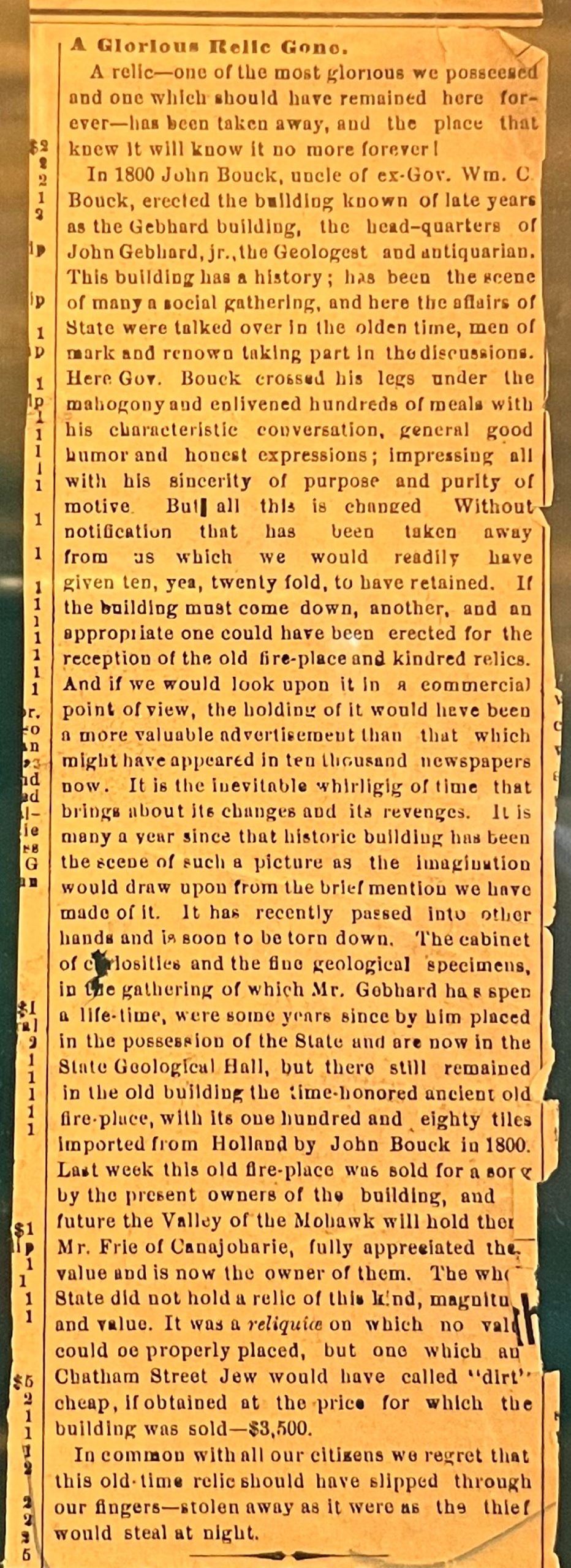
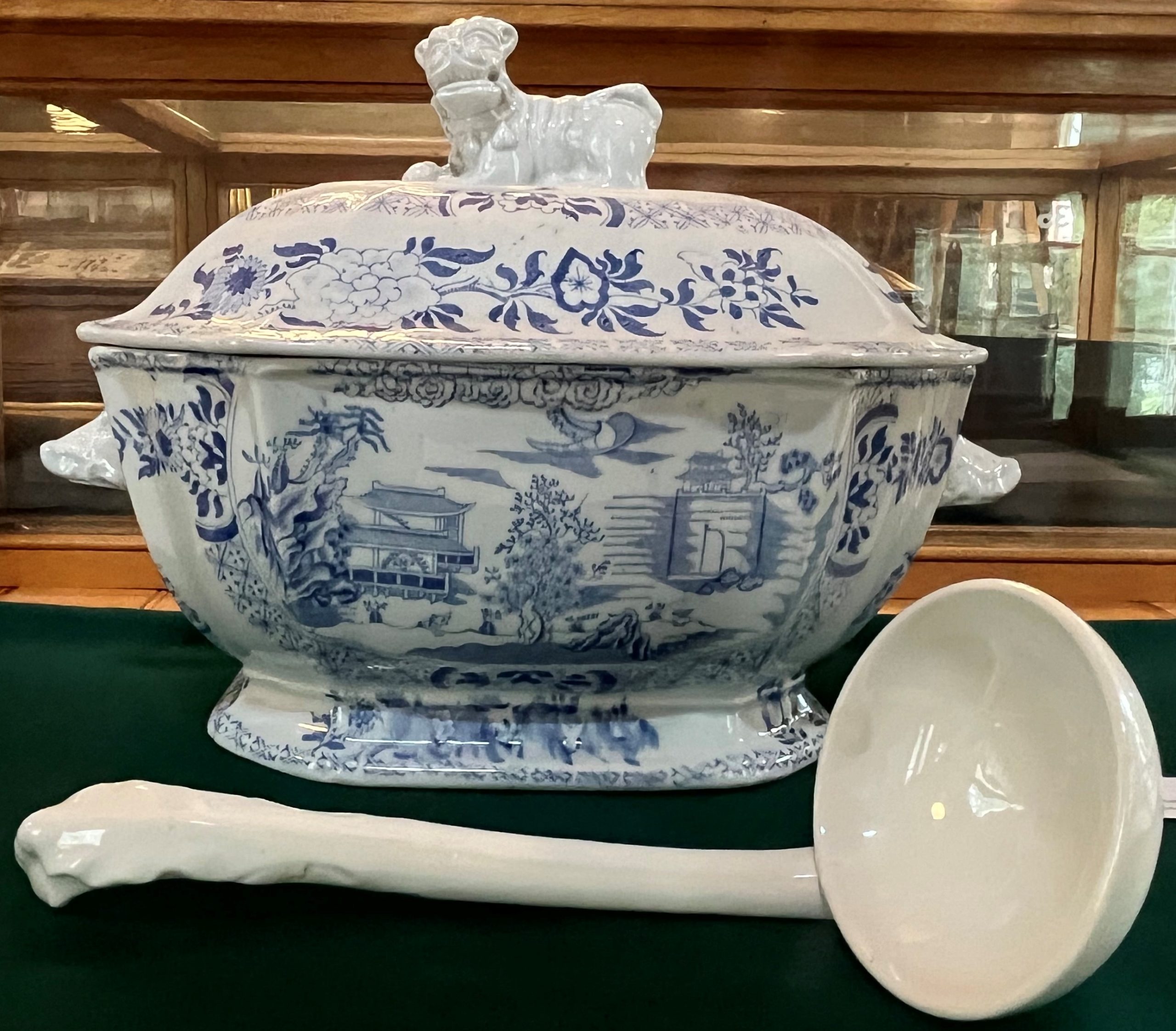
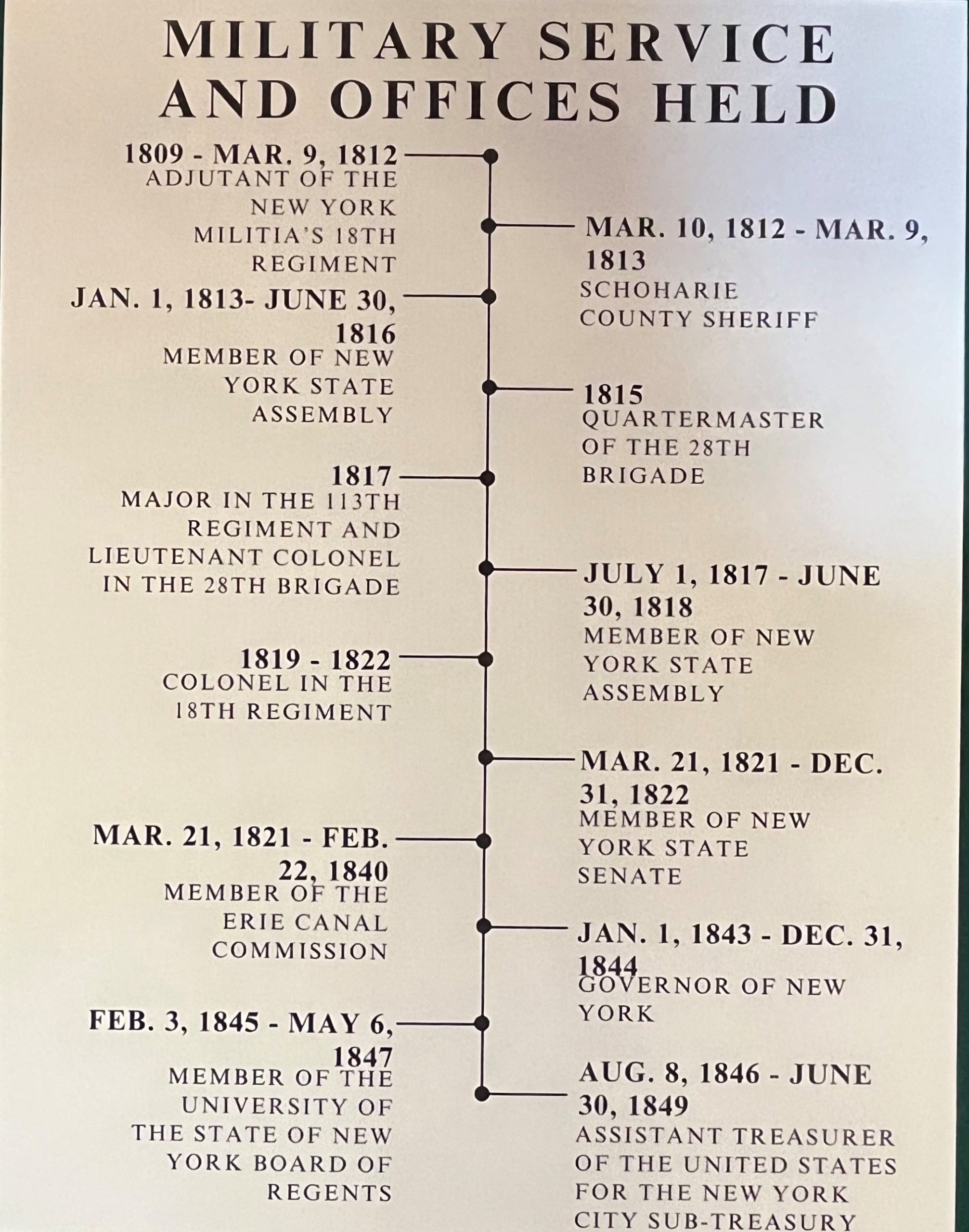
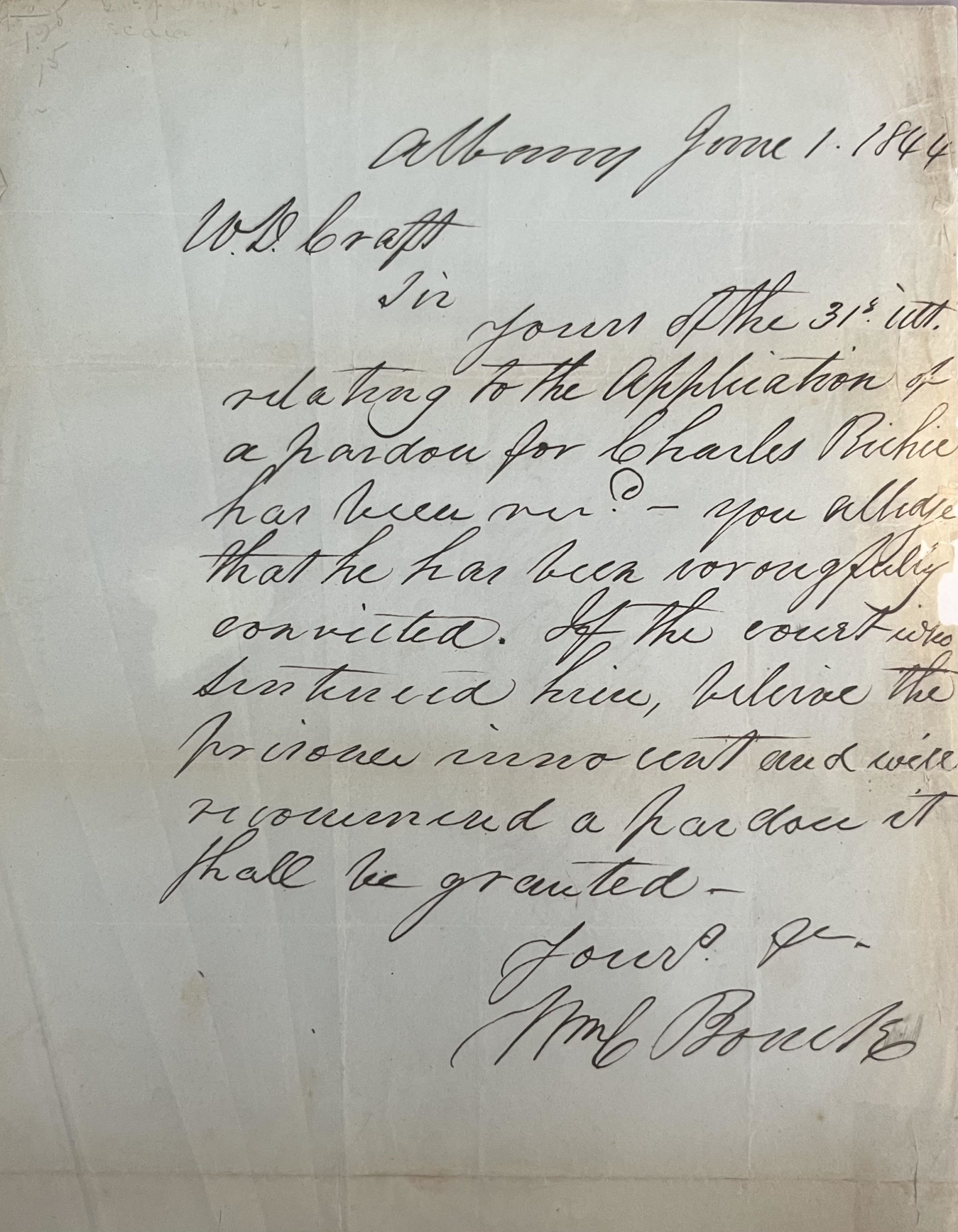
Transcript: Albany June 1, 1844
W.D. Craft
In yours of the 31st inst. relating to the application of a pardon for Charles Richie has been rcvd. – you alledge that he has been wrongfully convicted. If the court who sentenced him, believe the prisoner innocent and will recommend a pardon it shall be granted. Wm C Bouck
Governorship and Canal Commission
Bouck ran for governor under the Democratic Party with Daniel S. Dickinson as lieutenant governor for the first time in 1840. They were defeated and ran again in 1842. This time, they won. Bouck and Dickinson were chosen to run at a time when the Democratic Party was split into two disagreeing factions: the Hunkers and the Barnburners. The disagreements mainly stemmed from what to do about New York State’s credit. Bouck’s term was dominated by the Anti-Rent War, in which tenants under the Dutch patroon system demanded land reform and protested the patroon system.
Although he is known primarily for being governor, Bouck’s appointment as a canal commissioner was an important section of his life. During this time, he was able to supervise the incredible engineering feat of five double locks at Lockport on the Erie Canal. This section of the Erie Canal was the most difficult to build, and he later was among the first to suggest that the Erie Canal be enlarged. Bouck also oversaw the building of the Cayuga, Seneca, Chemung, Crooked Lake, and Chenango Canals.
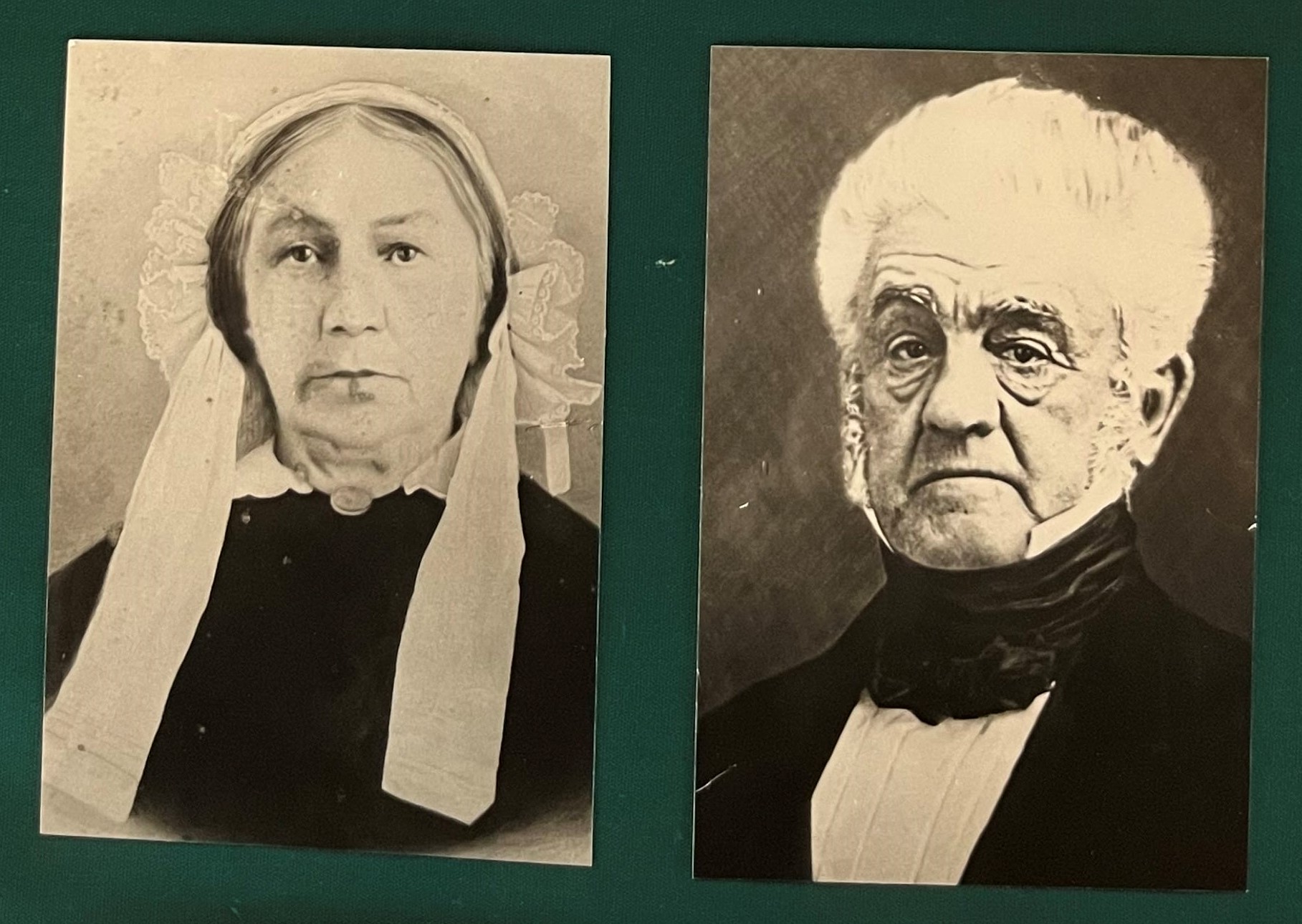
Death and Memory
William C. Bouck died on April 19, 1859 at 73 years old on Bouck’s Island. He is buried in the Middleburgh cemetery alongside his wife and children. In the ten years before he died, he spent his time in retirement on his farm.
Today, Bouck Hall on SUNY Cobleskill’s campus is named after Governor Bouck. Bouckville in Madison County is also named after him for his contributions to New York’s canal system. 180 years after his term as governor began, Bouck is remembered as New York’s farmer governor. He is still the only New York State Governor to have been born in Schoharie County.
